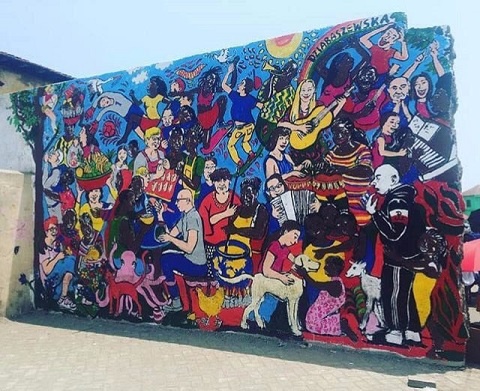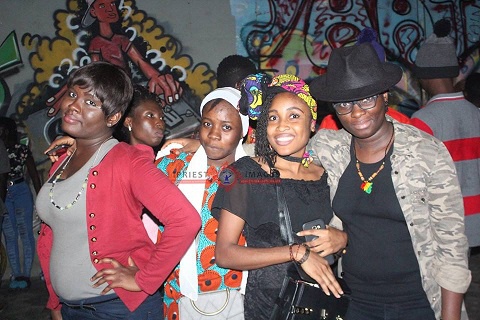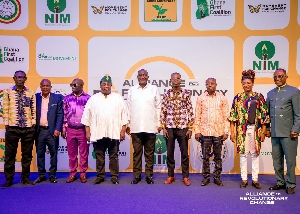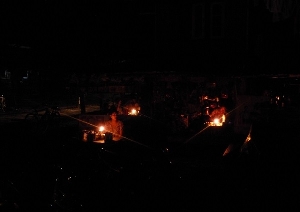 Some graffiti work on the wall
Some graffiti work on the wall
While walking through the streets of James Town one sunny day, I came across some graffiti work on the wall ; some were being painted over to make way for new ones. It was imminent that the Chale Wote festival was near because I had seen the Homowo (festival of the Ga people in Ghana) celebrations which always coincide with the Chale Wote Street Festival which started on the 14th of August and ended on the 20th of August in grand style.
Initially, there was not much activity during the first few days (probably because momentum was being gathered for the latter days). However, on the 16th of August, majority of the walls came to life as the various artists flooded their surfaces with colorful drawings. This brings to mind the theme : Wata Mata. It is interesting to note that almost all the works of art had something aqua-related even if it was a drop in the ocean.
(Thus Wata = Water and Mata = Matter). Some artists were able to finish their work in a day while others finished within a two-day span depending on the labor intensity of their work. There was an added advantage of getting the concept from the horse's own mouth because the artists were around to interact with the public as well as answer questions on their work.
There was also a painting of a boxer with the (James Town) Lighthouse tower beside him signifying that boxing is a common sport in that area.

The festival ,which is organized by Accra dot Alt, has been running annually since 2011 and it was no surprise that it was heavily patronized this year. On Saturday, I took public transport only to realize that half of the people in the vehicle were also going to the festival so we all walked together happily.
Getting there was not an issue because all we needed to do was follow the crowd since all roads lead to Chale Wote (only that in this case, some roads had been
blocked to make painting of the street possible).

The crowd was youthful but that is not to say that the older people did not come in their numbers. There were a number of foreigners as well who were seen trying to make way through the streets to go face-painting, buy items or take pictures.
Due to the fact that the place was crowded, there was heavy police presence to prevent any chaos. Aside, people running around while shouting and a little nudging here and there, everything was under control.
There was a lot of drumming and dancing alongside gun shots (whose significance are related to the Homowo festival celebrated by the Ga people). The shots are believed to ward off evil spirits.

While making my way through the thick crowd, I met an encircled crowd of people. When I decided to peep out of curiousity, I saw that there were two people boxing and the crowd made up the human-ring. This was just one of the many side-attractions. Others included : face painting, motor-bike riding and performances by some local artistes.
Not forgetting the fact that the organizers seized the opportunity to open the prisons so that people could have a feel of it. While entering the Ussher Fort prison, I saw something that caught my attention. It was an inscription "This is Art". I looked above, to see if I was missing anything only to find out that the inscription was meant for the heap of garbage lying just underneath the inscription.

Like many others, I was eager to find out whoever the artist was and what he or she really meant concerning that. This took me a while but I later came across an Instagram post by the originator which made a lot of sense.
She was referring to the sanitation problem in the country (Ghana) and how it may prove to be a threat if collective action is not taken.
I believe this was an important wake-up call that draws attention for the need to maintain a clean environment (which has been a major problem in the country). The solution may be less of clean-up exercises and more of attitudinal change but this is a story for another day.
Despite the sanitation flaw, the festival was colorful, beautiful and well-patronized. It would not be surprising to see it become a major tourist attraction in a few years to come.

Credit; iPriest Images
On Facebook; www.facebook.com/IPRIEST.IT.SOLUTION/












